Posted on September 27th, 2019 by Mary Lord
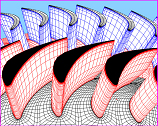 To help teachers and students as young as six explore the rewarding fields of computer science and engineering, eGFI has compiled this list of activities, free online courses, computer animations, and other resources.
To help teachers and students as young as six explore the rewarding fields of computer science and engineering, eGFI has compiled this list of activities, free online courses, computer animations, and other resources.
Read More
Filed under: For Teachers, Grades 6-8, Grades 9-12, Grades K-5, Web Resources | Comments Off on Computer Science Resources
Tags: apps, Class Activities, code.org, Computer Engineering, Computer Programming, Computer Science, Grades 6-8, Grades 9-12, Grades K-5, Internet Resources, Khan Academy, Lesson Plans, MIT, Resources for Teachers, software engineering, Web Resources
Posted on November 23rd, 2016 by Mary Lord
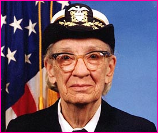 Rear Admiral Grace Murray Hopper was the first woman to earn a Ph.D. in mathematics from Yale, pioneered computer programming languages, discovered the first computer “bug,” and retired as the Navy’s highest ranking, longest-serving female officer in history. They even named a naval destroyer after her.
Rear Admiral Grace Murray Hopper was the first woman to earn a Ph.D. in mathematics from Yale, pioneered computer programming languages, discovered the first computer “bug,” and retired as the Navy’s highest ranking, longest-serving female officer in history. They even named a naval destroyer after her.
Read More
Filed under: Special Features | Comments Off on Amazing Grace
Tags: Computer Engineering, Computer Programming, Computer Science, Engineering in History, History, Mathematics, Science, Women in Engineering, Women in Science
Posted on November 24th, 2015 by Mary Lord
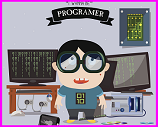 Computer programming is an essential language, one that an Atlanta-based tech company chief believes every elementary student should get a head start on learning. And he’s launching a nationwide grant contest that would send a master coding instructor to train K-8 teachers in a high-poverty school district for up to a year.
Computer programming is an essential language, one that an Atlanta-based tech company chief believes every elementary student should get a head start on learning. And he’s launching a nationwide grant contest that would send a master coding instructor to train K-8 teachers in a high-poverty school district for up to a year.
Read More
Filed under: Competitions and Contests, K-12 Outreach Programs | Comments Off on Teach Every Kid to Code – Grant
Tags: coding, Computer Programming, Curriculum, elementary school computer science, Emerald Data Solutions, Grant Opportunities, STEM education, Teacher Training
Posted on February 4th, 2015 by Mary Lord
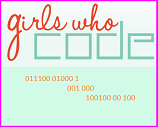 Apply by February 12, 2015 to attend the Girls Who Code Summer Immersion Program, a free, seven-week course of intensive instruction for high school sophomores and juniors in robotics, Web design, and mobile app development. The program also includes mentoring, demos, field trips, and workshops led by the computer industry’s top female entrepreneurs and engineers.
Apply by February 12, 2015 to attend the Girls Who Code Summer Immersion Program, a free, seven-week course of intensive instruction for high school sophomores and juniors in robotics, Web design, and mobile app development. The program also includes mentoring, demos, field trips, and workshops led by the computer industry’s top female entrepreneurs and engineers.
Read More
Filed under: Grades 9-12, K-12 Outreach Programs, Special Features | Comments Off on Girls Who Code Summer Program
Tags: Computer Programming, Computer Science, free summer learning, Girls Who Code, Programs for Girls, summer program
Posted on September 25th, 2013 by Mary Lord
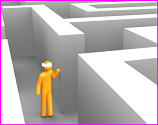 In this activity, students working in pairs learn basic computer programming and software engineering concepts by building an obstacle course, then steering a blindfolded friend through it by using a series of commands. They re-run the maze to improve on their “program.”
In this activity, students working in pairs learn basic computer programming and software engineering concepts by building an obstacle course, then steering a blindfolded friend through it by using a series of commands. They re-run the maze to improve on their “program.”
Read More
Filed under: Class Activities, Grades 6-8, Grades 6-8, Grades K-5, Grades K-5, Lesson Plans | Comments Off on Program a Friend
Tags: Class Activities, coding, Computer Programming, Grades 6-8, Grades K-5, Lesson Plans, Mathematics, Robotics, software engineering, Technology
Posted on August 29th, 2013 by Mary Lord
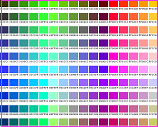 Computer science has the highest pay for new college graduates, twice the national average job growth of more than double the national average, and applications that stretch from rock music to medicine. Yet 9 in 10 schools don’t teach programming. Code.org hopes to change that with a host of free resources to get kids as young as four creating websites and apps.
Computer science has the highest pay for new college graduates, twice the national average job growth of more than double the national average, and applications that stretch from rock music to medicine. Yet 9 in 10 schools don’t teach programming. Code.org hopes to change that with a host of free resources to get kids as young as four creating websites and apps.
The answer is computer programming, and advocates from Microsoft founder Bill Gates to former president Bill Clinton are pushing to include it in the K-12 curriculum.
Far from being complicated algorithms only a geek could master, code writing can be learned by just about anyone — even four-year-olds. Code.org has compiled a host of websites, courses, and other free resources to help students hone programming skills from building websites to creating phone apps. There also are tips for using code writing and programming projects and activities in math or science classes to cover content standards.
Read More
Filed under: For Teachers, Grades 6-8, Grades 6-8, Grades 9-12, Grades 9-12, Grades K-5, Grades K-5, K-12 Outreach Programs, Lesson Plans, Special Features, Web Resources | Comments Off on Code Calling
Tags: code writing, code.org, Computer Programming, Computer Science, Curriculum, Internet Resources, Lesson Plan, Resources for Teachers, STEM education, Teacher Resources, Technology for Learning, Website
Posted on July 11th, 2013 by Mary Lord
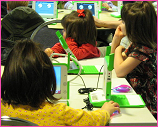 Computer programming in kindergarten? Code writing is just one of several new skills England’s children would be taught, according to the final version of an overhauled national curriculum released on July 8.
Computer programming in kindergarten? Code writing is just one of several new skills England’s children would be taught, according to the final version of an overhauled national curriculum released on July 8.
Read More
Filed under: K-12 Education News, Special Features | Comments Off on England Mulls Coding for All Kids
Tags: binary number systems, coding, Computer Programming, Computer Science, computer-aided design, England, learning, national curriculum, STEM education, teaching
Posted on July 3rd, 2012 by Mary Lord
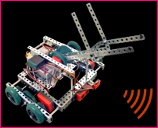 From art to aerospace, computer science plays a vital role in virtually every field and innovation. Yet few U.S. students pursue computer science or engineering degrees. The Computer Science Student Network (CS2N), a collaborative research project between Carnegie Mellon University and the Defense Advanced Research Projects Agency (DARPA), aims to change that with a site full of engaging activities, competitions, step-by-step programming lessons, animation software, and free courses for teachers.
From art to aerospace, computer science plays a vital role in virtually every field and innovation. Yet few U.S. students pursue computer science or engineering degrees. The Computer Science Student Network (CS2N), a collaborative research project between Carnegie Mellon University and the Defense Advanced Research Projects Agency (DARPA), aims to change that with a site full of engaging activities, competitions, step-by-step programming lessons, animation software, and free courses for teachers.
Read More
Filed under: For Teachers, Grades 6-8, Grades 9-12, Grades K-5, K-12 Outreach Programs, Web Resources | Comments Off on CS2N: Computer Science Student Network
Tags: Carnegie Mellon University, Competitions for Students, computation, computer animation, Computer Engineering, Computer Programming, Computer Science, Computer Science Students Network, CS-STEM, CS2N, DARPA, Software
Posted on December 4th, 2011 by Mary Lord
 In this activity, students in grades 4 – 12 will do math like a computer. They will learn the basics of binary number systems by writing and then counting on their hands, and use their knowledge to decode numbers and letters.
In this activity, students in grades 4 – 12 will do math like a computer. They will learn the basics of binary number systems by writing and then counting on their hands, and use their knowledge to decode numbers and letters.
Read More
Filed under: Class Activities, Grades 6-8, Grades 6-8, Grades 9-12, Grades 9-12, Grades K-5, Grades K-5, Lesson Plans | Comments Off on Lesson: Bits & Binary
Tags: binary number systems, Class Activities, code, Computer Engineering, Computer Programming, Computer Science, digital, Grades 6-8, Grades 9-12, Grades K-5, Lesson Plan
 To help teachers and students as young as six explore the rewarding fields of computer science and engineering, eGFI has compiled this list of activities, free online courses, computer animations, and other resources.
To help teachers and students as young as six explore the rewarding fields of computer science and engineering, eGFI has compiled this list of activities, free online courses, computer animations, and other resources.








 Rear Admiral Grace Murray Hopper was the first woman to earn a Ph.D. in mathematics from Yale, pioneered computer programming languages, discovered the first computer “bug,” and retired as the Navy’s highest ranking, longest-serving female officer in history. They even named a naval destroyer after her.
Rear Admiral Grace Murray Hopper was the first woman to earn a Ph.D. in mathematics from Yale, pioneered computer programming languages, discovered the first computer “bug,” and retired as the Navy’s highest ranking, longest-serving female officer in history. They even named a naval destroyer after her. Computer programming is an essential language, one that an Atlanta-based tech company chief believes every elementary student should get a head start on learning. And he’s launching a nationwide grant contest that would send a master coding instructor to train K-8 teachers in a high-poverty school district for up to a year.
Computer programming is an essential language, one that an Atlanta-based tech company chief believes every elementary student should get a head start on learning. And he’s launching a nationwide grant contest that would send a master coding instructor to train K-8 teachers in a high-poverty school district for up to a year. Apply by February 12, 2015 to attend the Girls Who Code Summer Immersion Program, a free, seven-week course of intensive instruction for high school sophomores and juniors in robotics, Web design, and mobile app development. The program also includes mentoring, demos, field trips, and workshops led by the computer industry’s top female entrepreneurs and engineers.
Apply by February 12, 2015 to attend the Girls Who Code Summer Immersion Program, a free, seven-week course of intensive instruction for high school sophomores and juniors in robotics, Web design, and mobile app development. The program also includes mentoring, demos, field trips, and workshops led by the computer industry’s top female entrepreneurs and engineers.  In this activity, students working in pairs learn basic computer programming and software engineering concepts by building an obstacle course, then steering a blindfolded friend through it by using a series of commands. They re-run the maze to improve on their “program.”
In this activity, students working in pairs learn basic computer programming and software engineering concepts by building an obstacle course, then steering a blindfolded friend through it by using a series of commands. They re-run the maze to improve on their “program.” Computer science has the highest pay for new college graduates, twice the national average job growth of more than double the national average, and applications that stretch from rock music to medicine. Yet 9 in 10 schools don’t teach programming. Code.org hopes to change that with a host of free resources to get kids as young as four creating websites and apps.
Computer science has the highest pay for new college graduates, twice the national average job growth of more than double the national average, and applications that stretch from rock music to medicine. Yet 9 in 10 schools don’t teach programming. Code.org hopes to change that with a host of free resources to get kids as young as four creating websites and apps. Computer programming in kindergarten? Code writing is just one of several new skills England’s children would be taught, according to the final version of an overhauled national curriculum released on July 8.
Computer programming in kindergarten? Code writing is just one of several new skills England’s children would be taught, according to the final version of an overhauled national curriculum released on July 8. From art to aerospace, computer science plays a vital role in virtually every field and innovation. Yet few U.S. students pursue computer science or engineering degrees. The Computer Science Student Network (CS2N), a collaborative research project between Carnegie Mellon University and the Defense Advanced Research Projects Agency (DARPA), aims to change that with a site full of engaging activities, competitions, step-by-step programming lessons, animation software, and free courses for teachers.
From art to aerospace, computer science plays a vital role in virtually every field and innovation. Yet few U.S. students pursue computer science or engineering degrees. The Computer Science Student Network (CS2N), a collaborative research project between Carnegie Mellon University and the Defense Advanced Research Projects Agency (DARPA), aims to change that with a site full of engaging activities, competitions, step-by-step programming lessons, animation software, and free courses for teachers. In this activity, students in grades 4 – 12 will do math like a computer. They will learn the basics of binary number systems by writing and then counting on their hands, and use their knowledge to decode numbers and letters.
In this activity, students in grades 4 – 12 will do math like a computer. They will learn the basics of binary number systems by writing and then counting on their hands, and use their knowledge to decode numbers and letters.